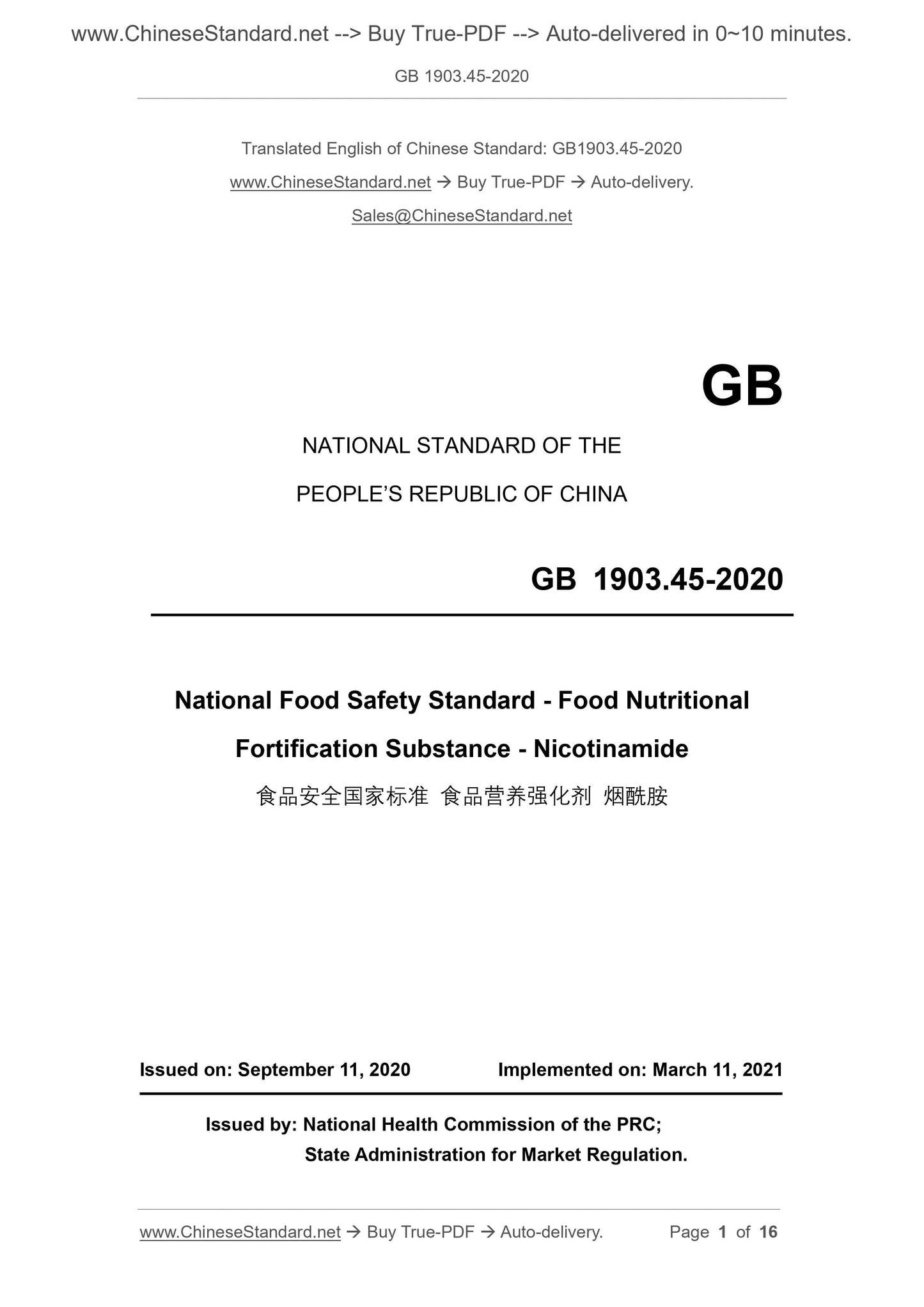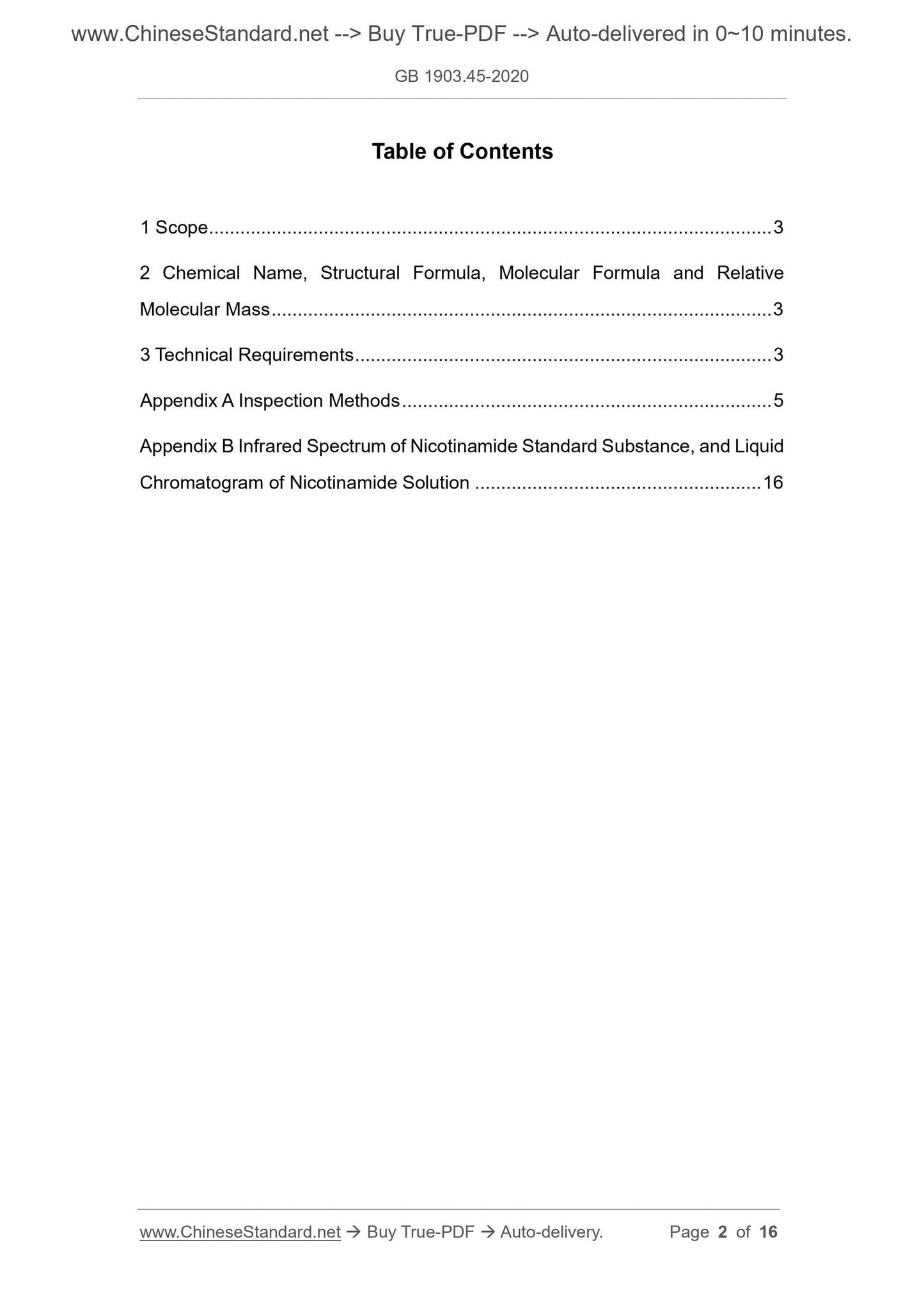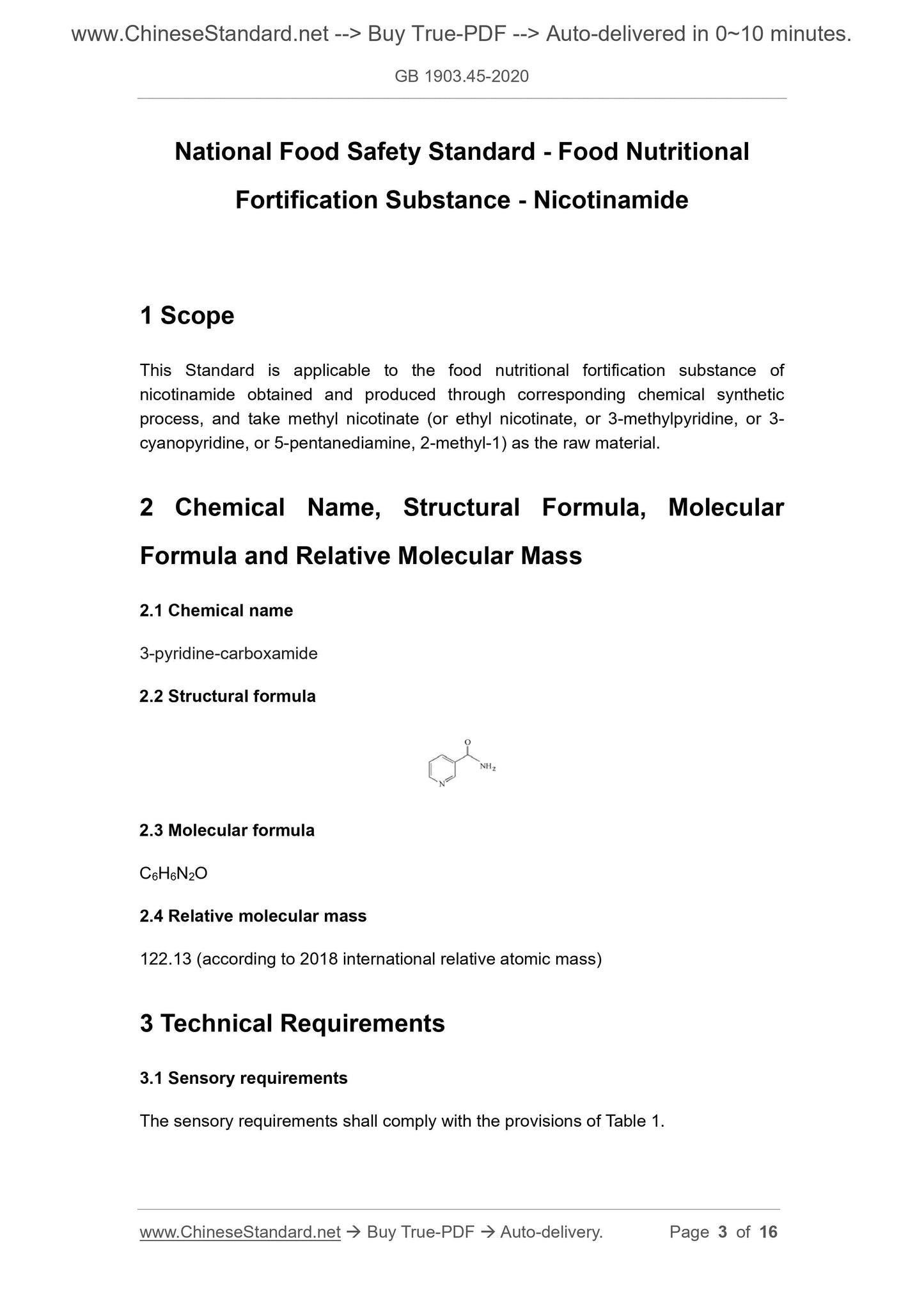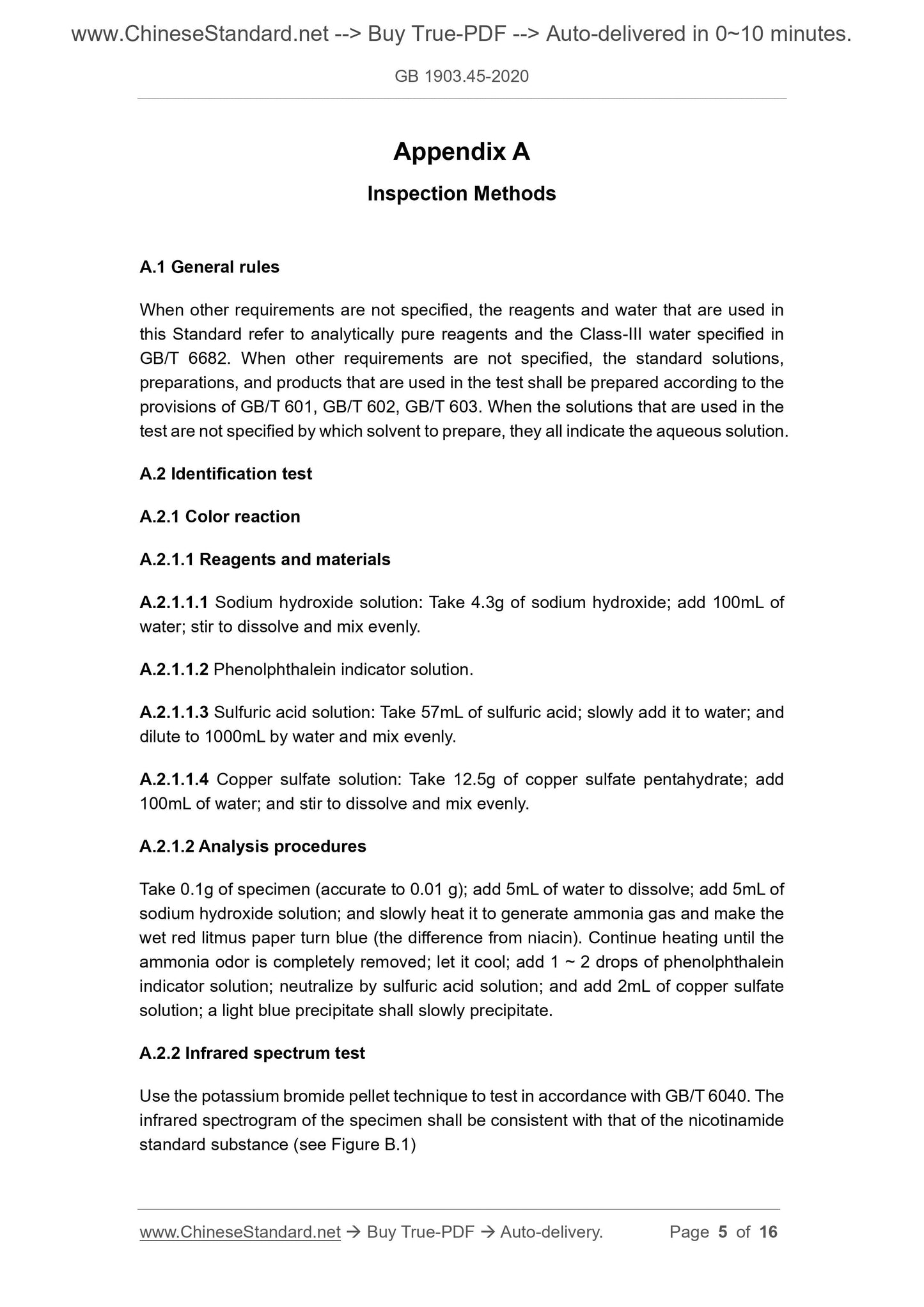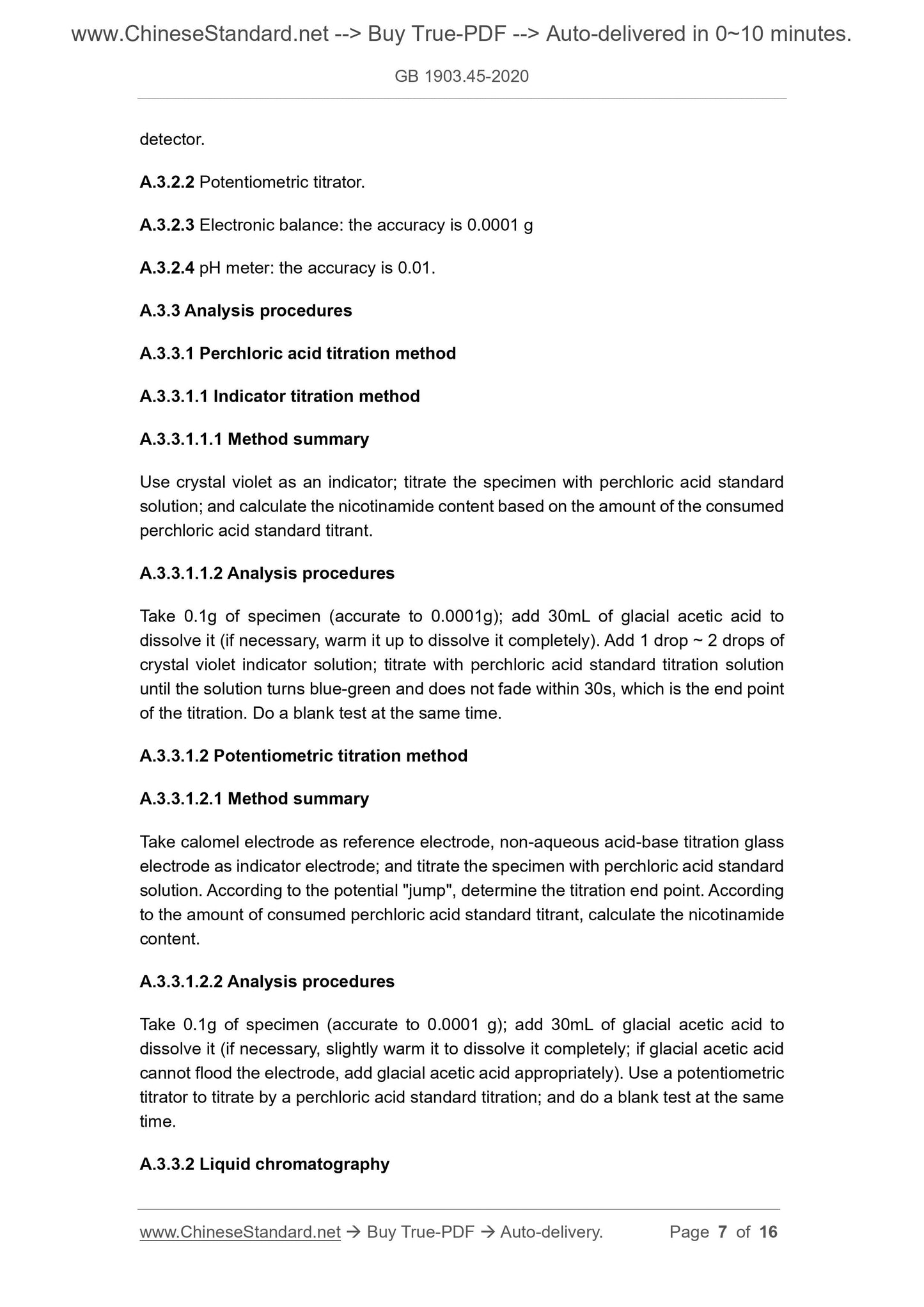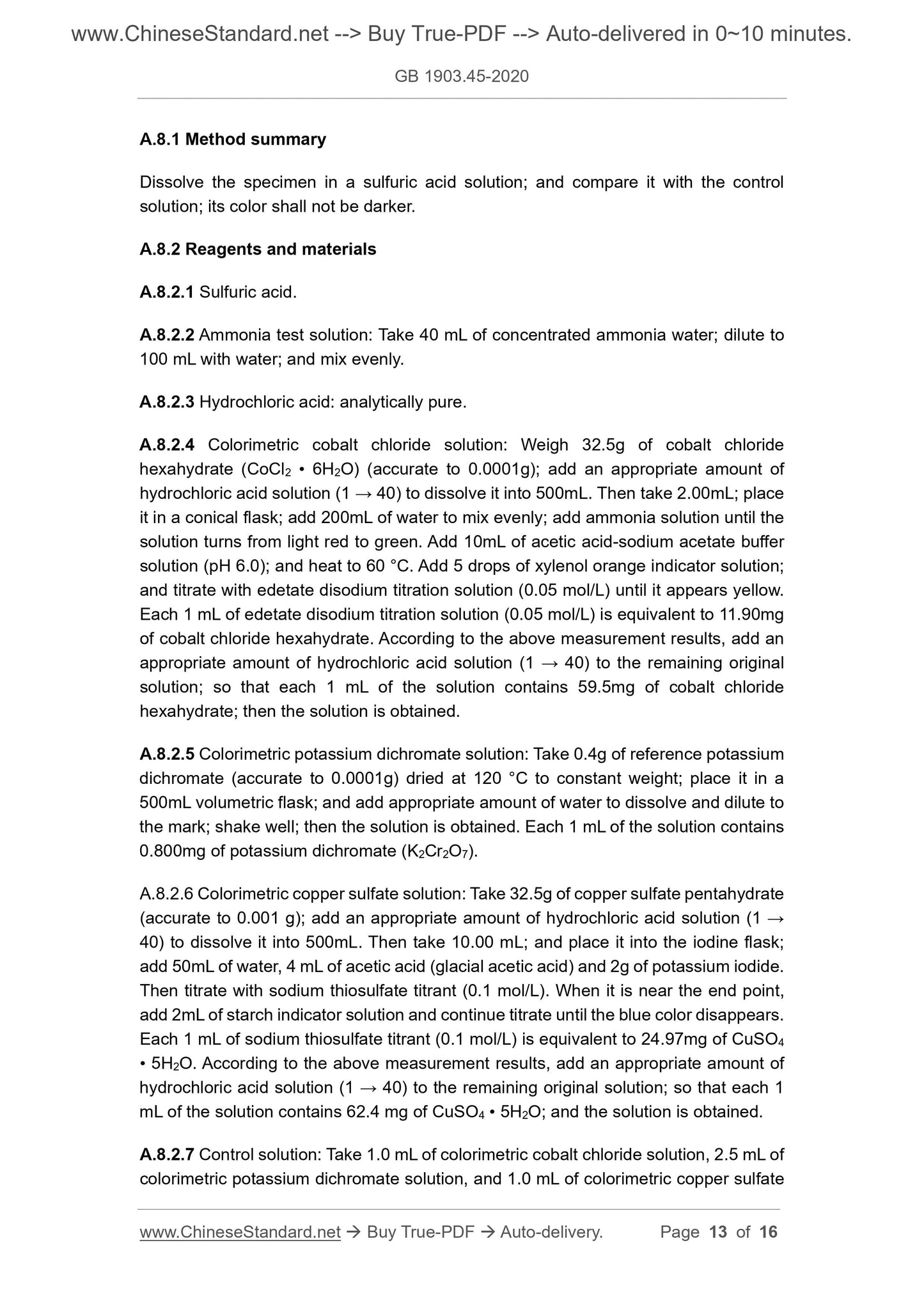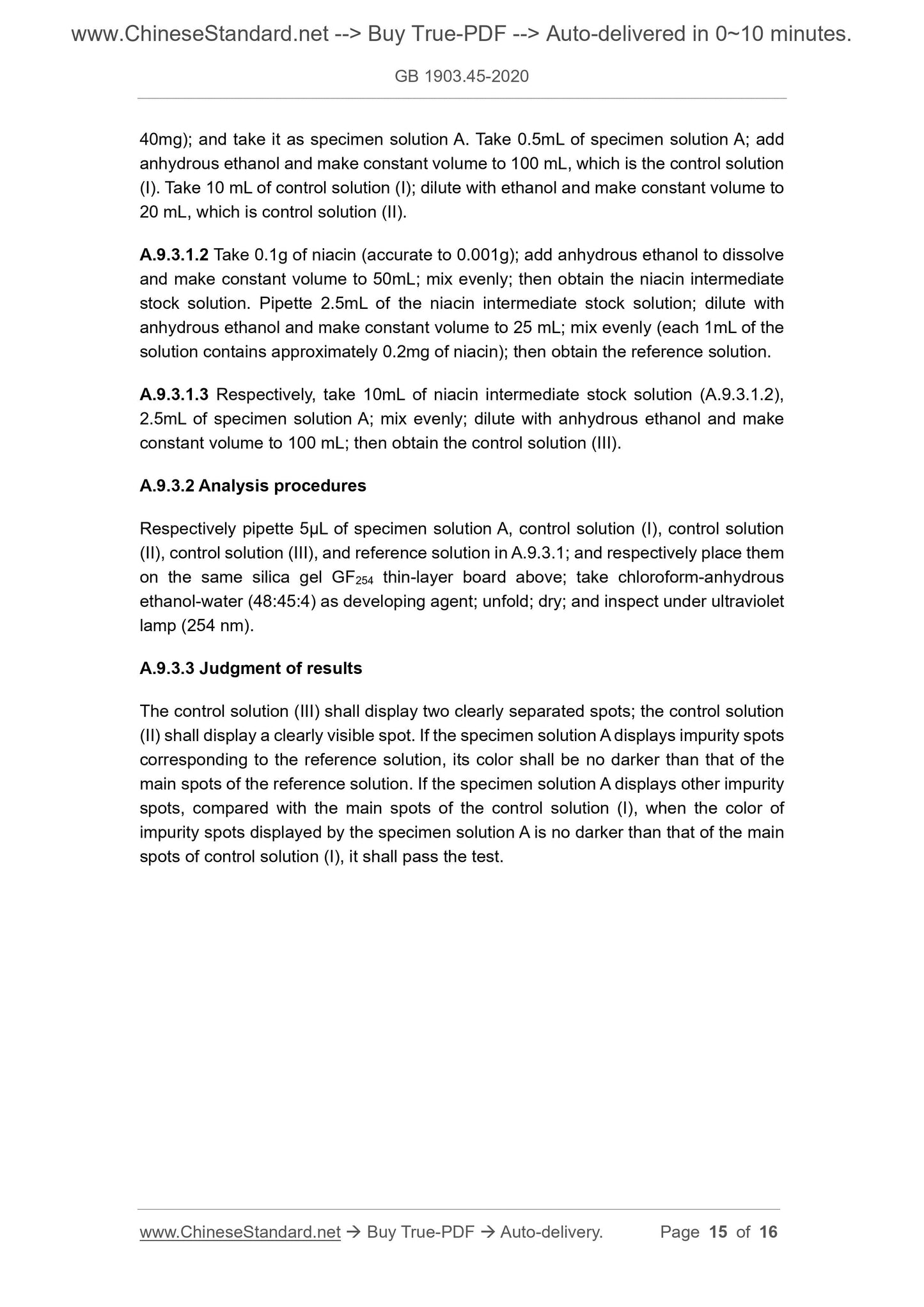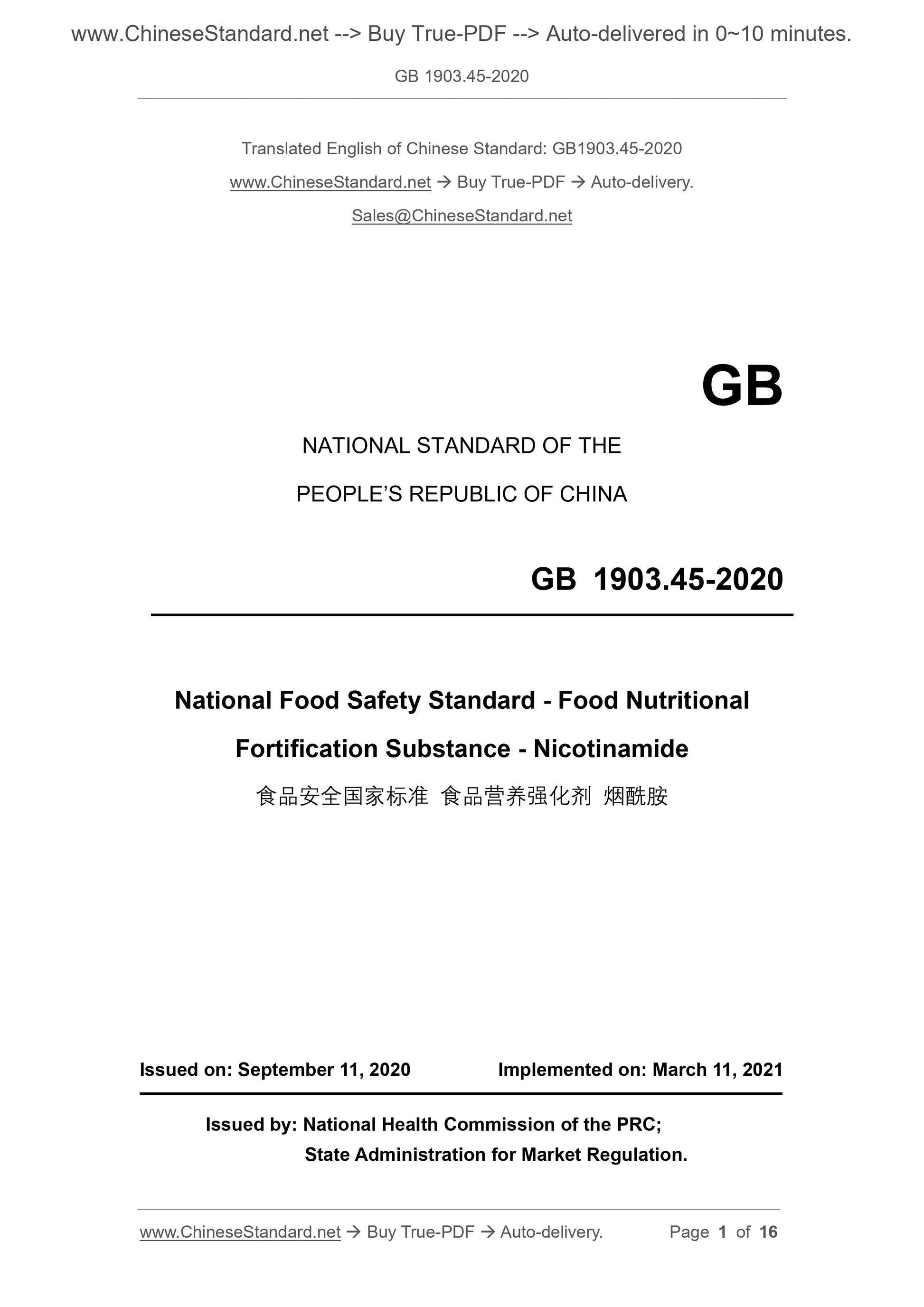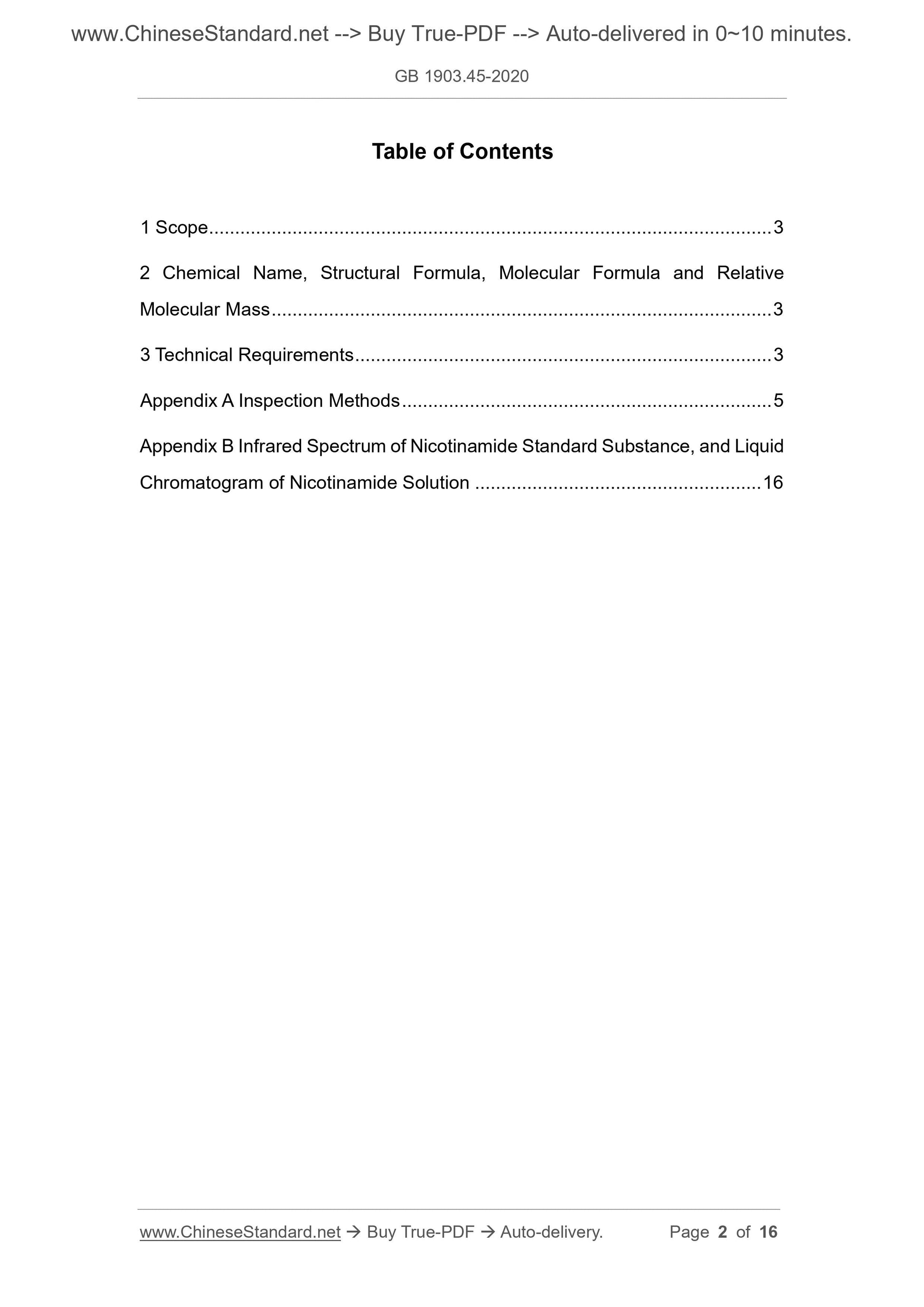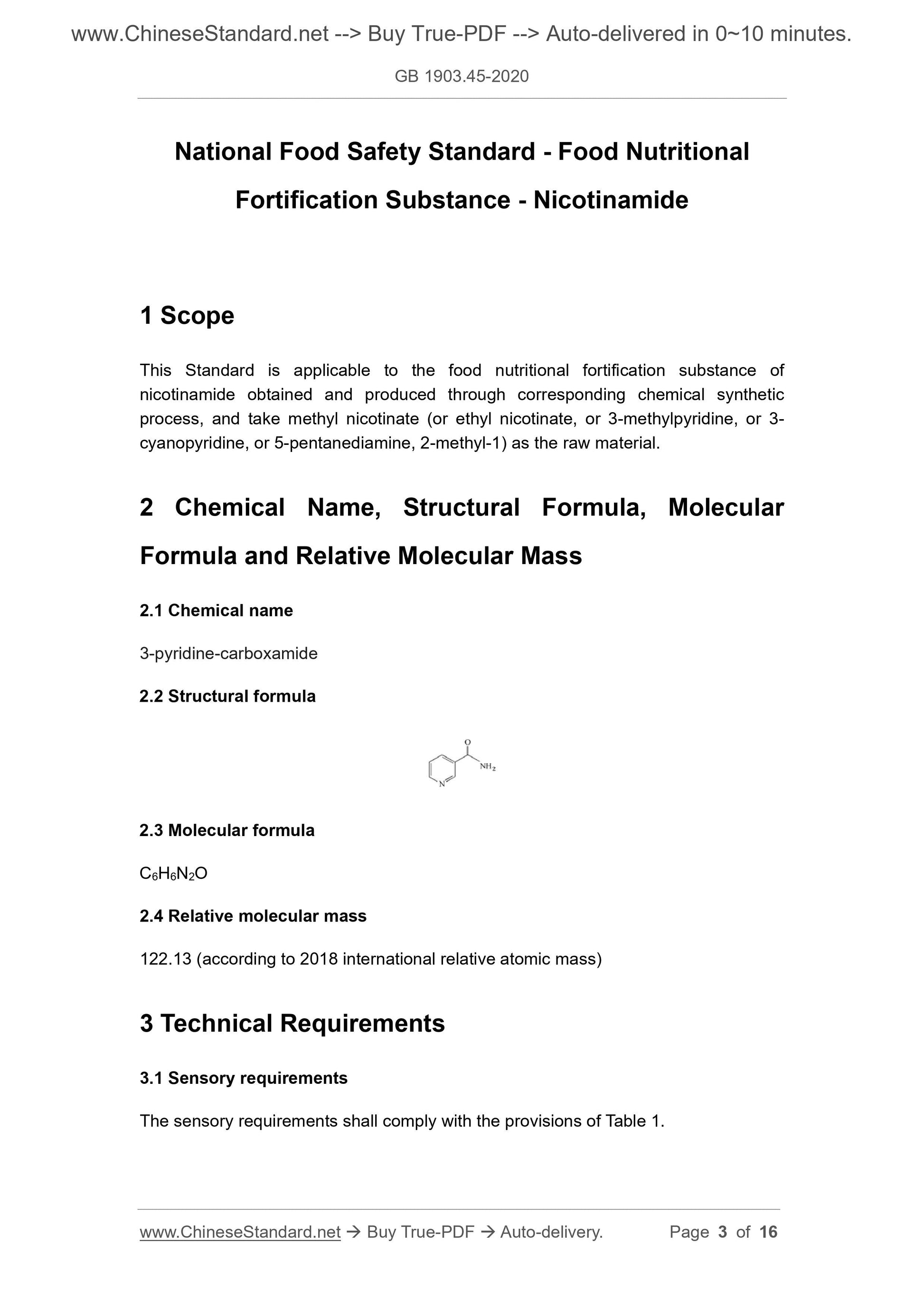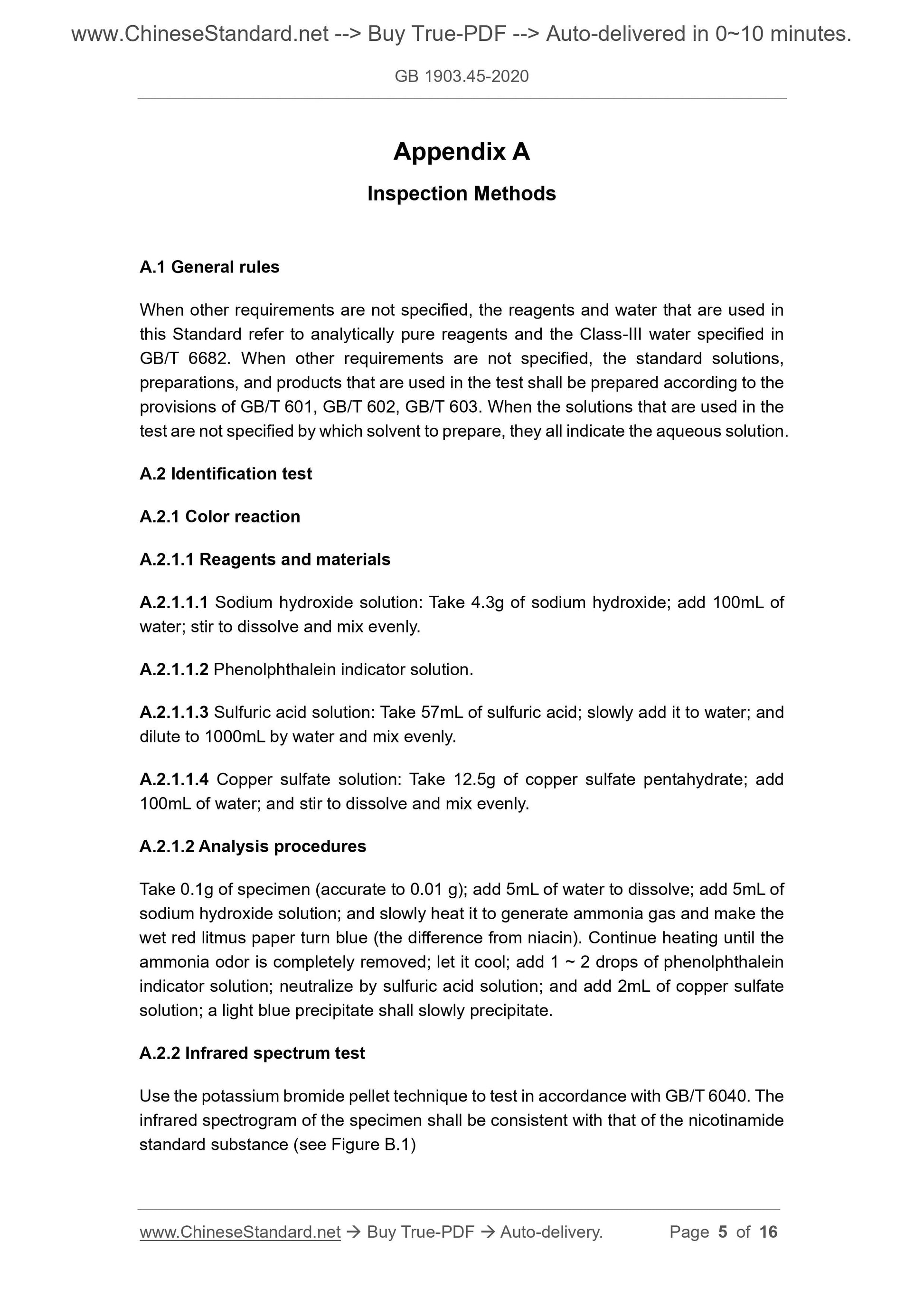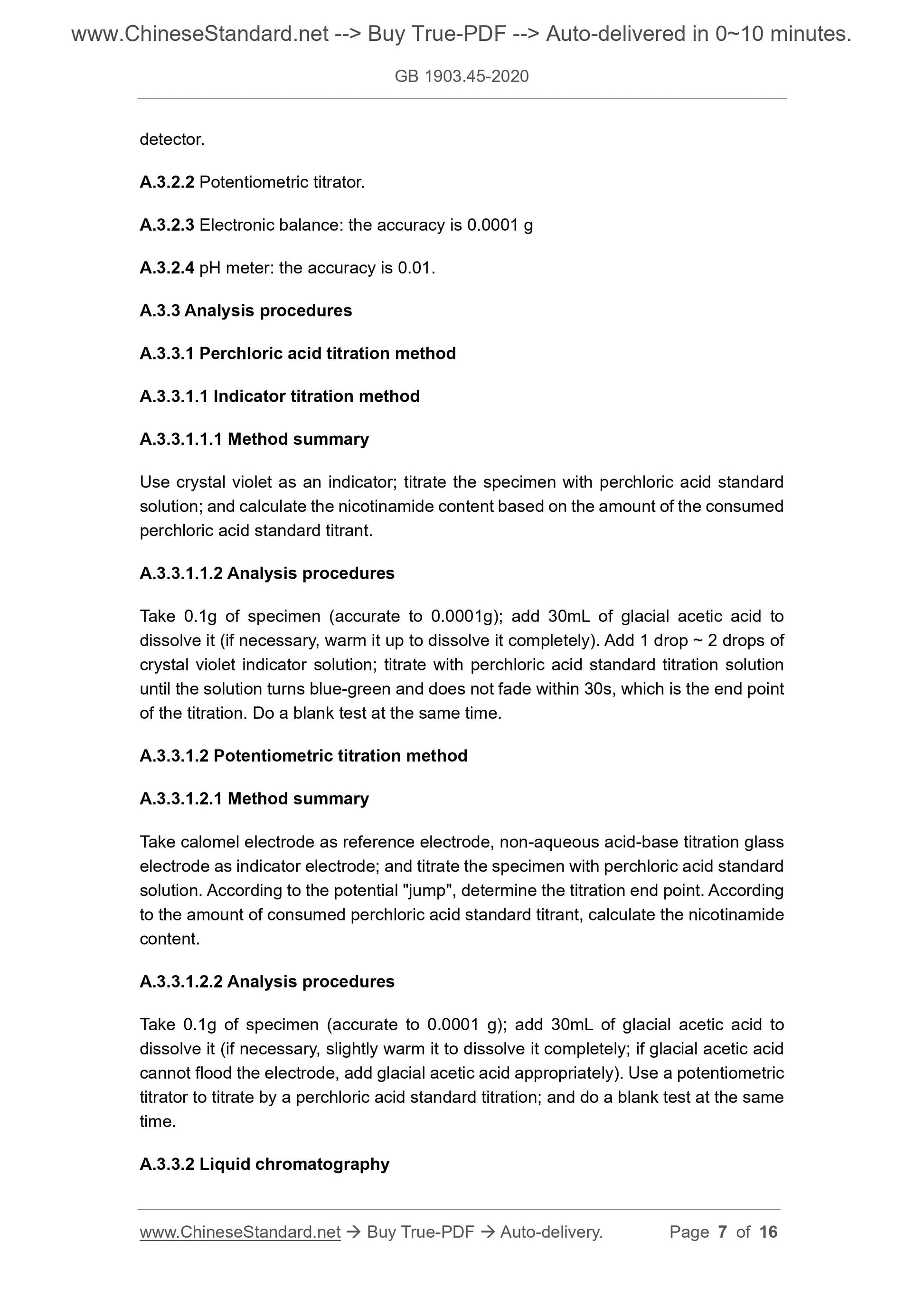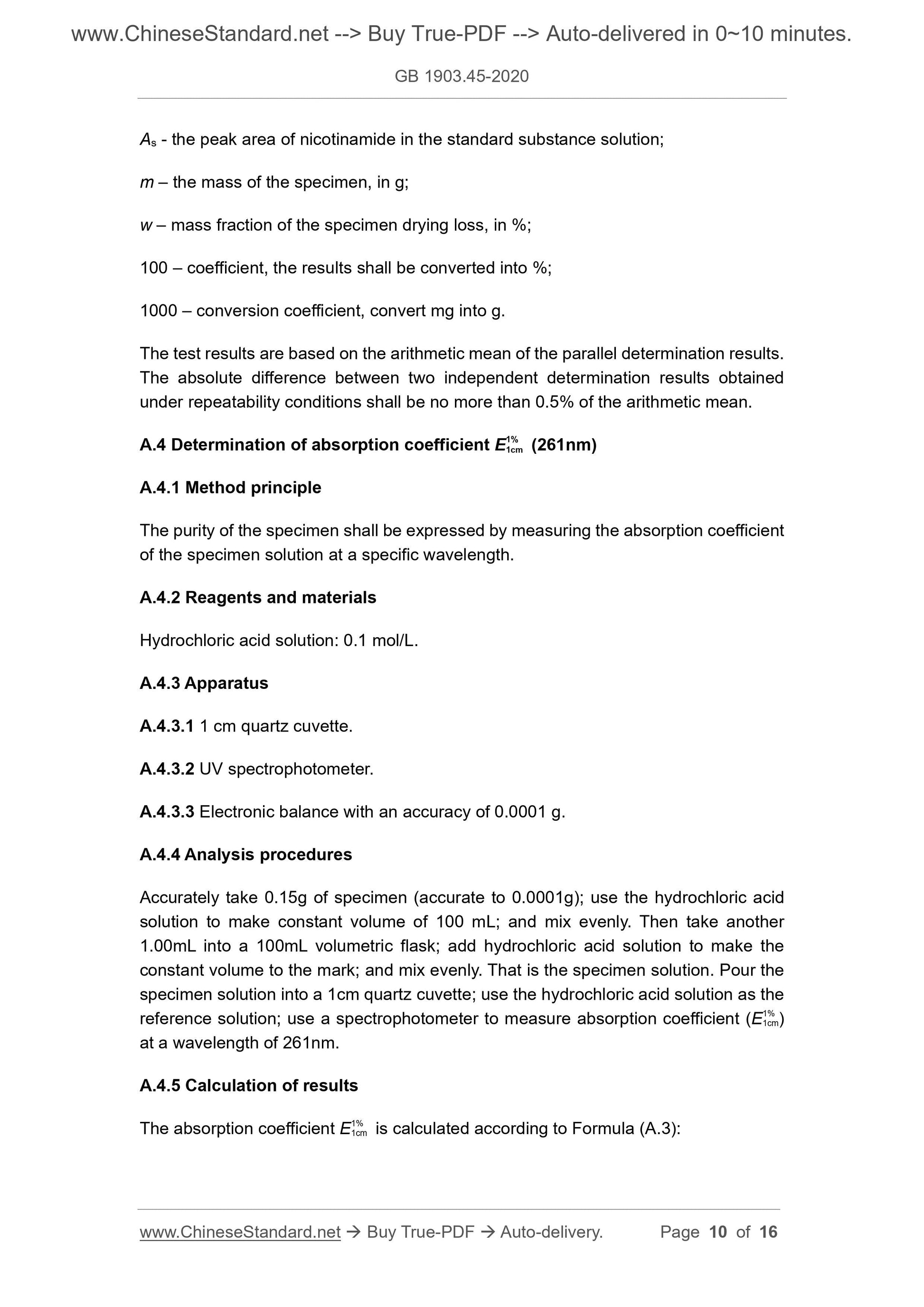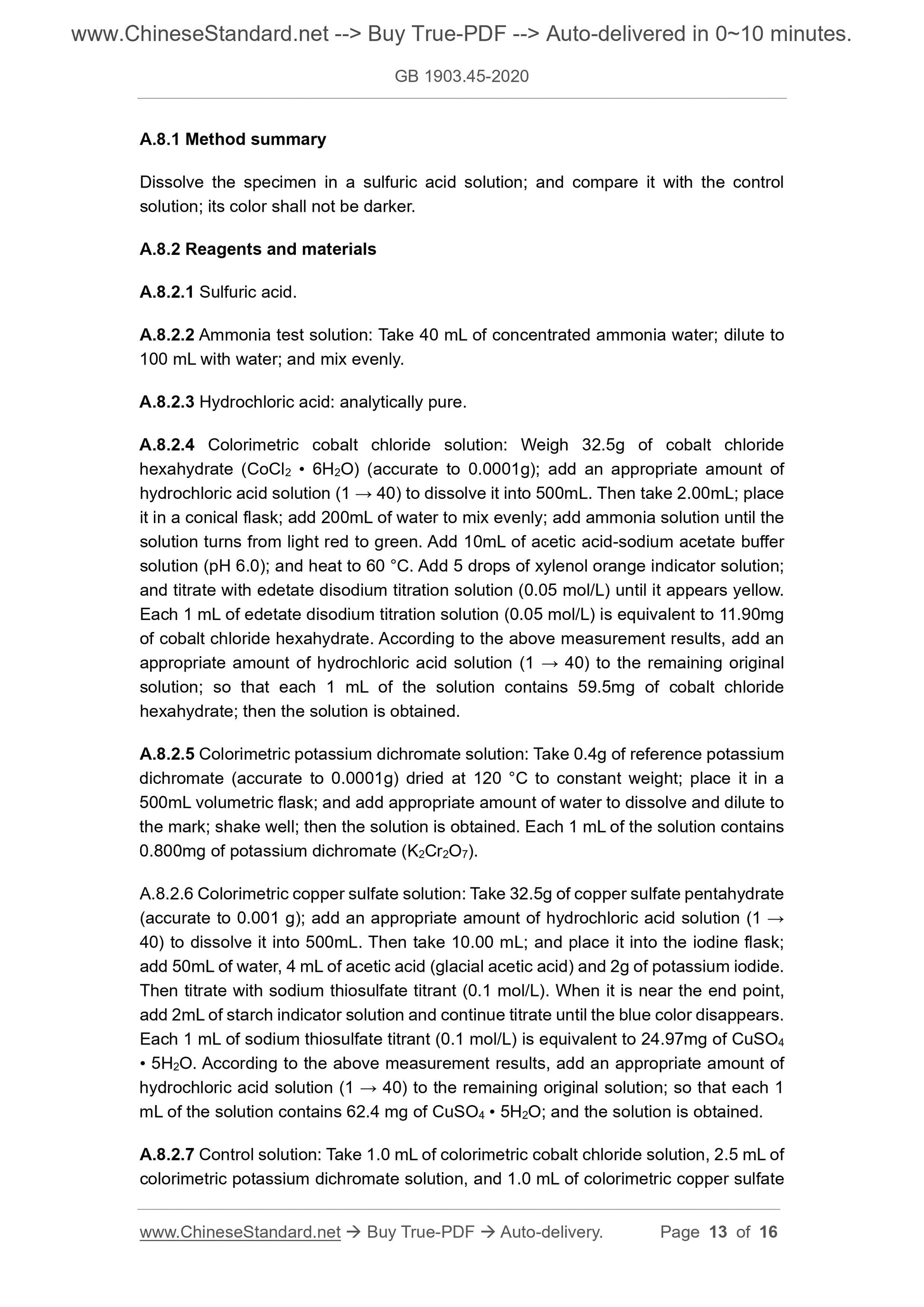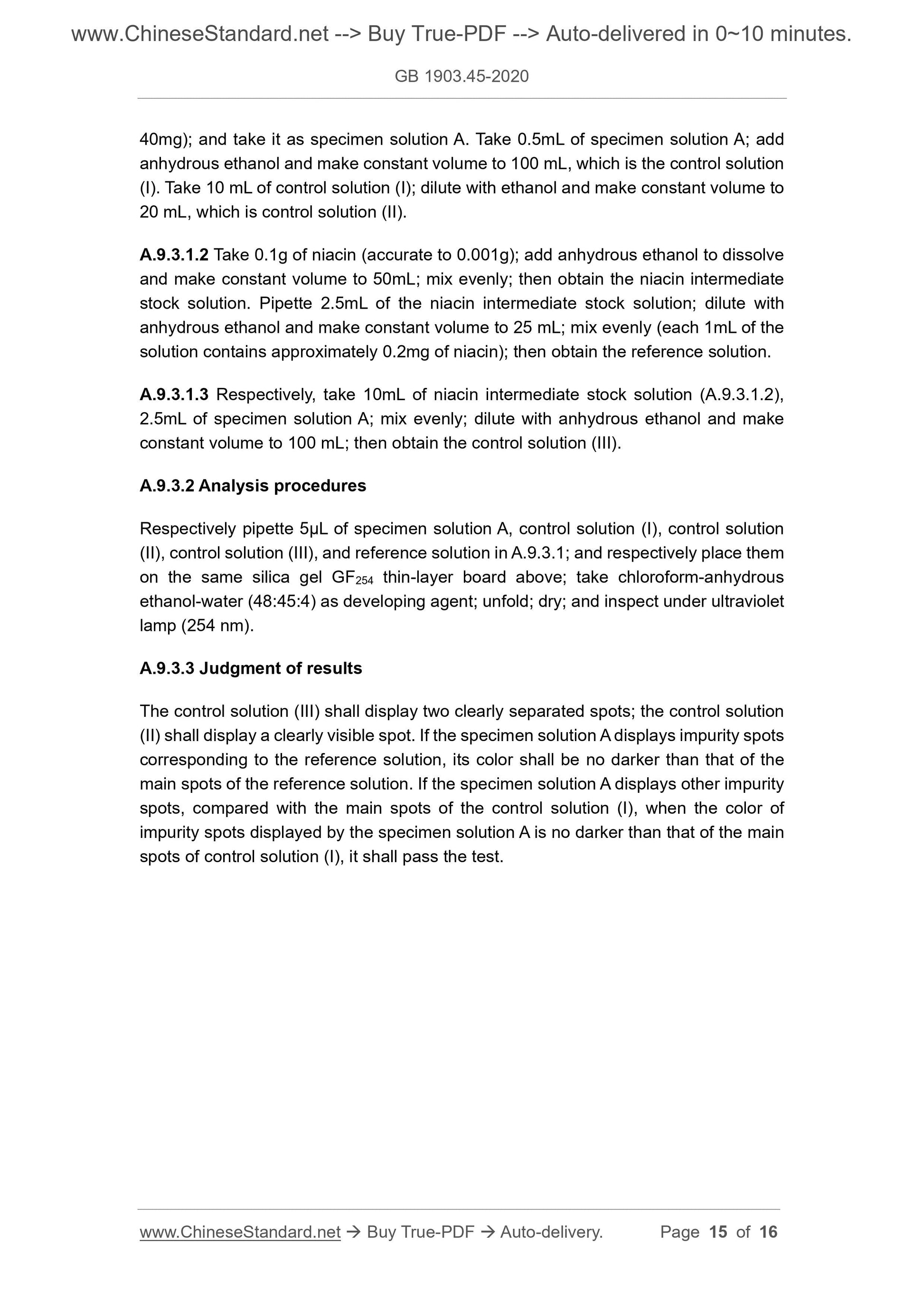1
/
of
8
www.ChineseStandard.us -- Field Test Asia Pte. Ltd.
GB 1903.45-2020 English PDF
GB 1903.45-2020 English PDF
Regular price
$170.00
Regular price
Sale price
$170.00
Unit price
/
per
Shipping calculated at checkout.
Couldn't load pickup availability
GB 1903.45-2020: National food safety standard - Food Nutritional Fortification Substance - Nicotinamide
Delivery: 9 seconds. Download (and Email) true-PDF + Invoice.Get Quotation: Click GB 1903.45-2020 (Self-service in 1-minute)
Newer / historical versions: GB 1903.45-2020
Preview True-PDF
Scope
This Standard is applicable to the food nutritional fortification substance ofnicotinamide obtained and produced through corresponding chemical synthetic
process, and take methyl nicotinate (or ethyl nicotinate, or 3-methylpyridine, or 3-
cyanopyridine, or 5-pentanediamine, 2-methyl-1) as the raw material.
2 Chemical Name, Structural Formula, Molecular
Formula and Relative Molecular Mass
2.1 Chemical name
3-pyridine-carboxamide
2.2 Structural formula
2.3 Molecular formula
C6H6N2O
2.4 Relative molecular mass
122.13 (according to 2018 international relative atomic mass)
Basic Data
| Standard ID | GB 1903.45-2020 (GB1903.45-2020) |
| Description (Translated English) | National food safety standard - Food Nutritional Fortification Substance - Nicotinamide |
| Sector / Industry | National Standard |
| Classification of Chinese Standard | X09 |
| Word Count Estimation | 12,163 |
| Date of Issue | 2020-09-11 |
| Date of Implementation | 2021-03-11 |
| Regulation (derived from) | National Health Commission Announcement No. 7 (2020) of the State Administration for Market Regulation |
| Issuing agency(ies) | National Health Commission of the People's Republic of China, State Administration for Market Regulation |
Share
